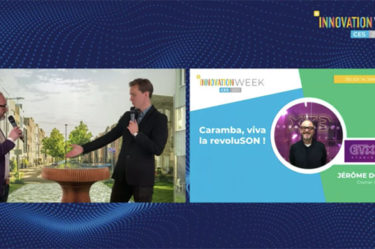2022 has been a year full of events: the gradual exit from Covid, Russia’s invasion of Ukraine, the French presidential elections, monkeypox, high inflation, weather disasters… There is one common concern: purchasing power. In fact, in September 2022, 48% of French people claim it is their main concern.
In this context, focusing on the native podcast, we see a slight erosion of the rate in listeners. After taking off until 2021, going from 22% to 33% compared to 2019, in 2022, it lost 1 point. It is not a decline, but rather a return to pre-quarantine listening habits.
Native podcasts continue to be popular
In 2022, 69% of weekly listeners say they have increased their consumption of native podcasts since they started listening to them. Moreover, 52% plan to increase their consumption within the following semester.
However, it is still a niche audience. We can legitimately ask ourselves the question of the democratization of the podcast. Upon closer inspection, the audience is young (35 years old on average), urban (46% live in central cities), family (62% of households with children) and hyperconnected (4 social networks used on average).
We can also note that this audience is an over-consumer of media. Indeed, 86% subscribe to a music streaming service. 72% regularly watch TV series. 71% regularly watch live TV. 59% regularly read the press. 59% regularly read books.
Native podcasts are now very easy to access, especially for regular listeners. 86% easily find new native podcasts that interest them. Regarding the non-listeners of native podcasts, which represent 68%, the main reason they give for not listening is that they don’t know what a podcast is, for 30% of them.
For others, native podcasts have become a daily companion. 79% consider that they became a habit, something anchored in their daily lives.
Where do people listen to native podcasts?
Native podcasts are consumed in equal parts at home and in mobility situations. By “mobile situation” we mean the car, public transport or even the street. To the question: “How often do you listen to native podcasts in the following places?” 85% of people say they listen “often” or “from time to time” to native podcasts in these situations. (As opposed to 15% who listen little or not at all in mobility situations)
Concerning the home, 85% of people say they listen “often” or “from time to time” to native podcasts at home. (Against 15% who listen little or not at all at home).
Podcasts allow multi-tasking
The podcast allows you to perform other tasks while listening to them. 89% of weekly listeners of native podcasts say that they sometimes do something else at the same time, even if only from time to time. The most common tasks are cooking, playing sports, scrolling the Internet or doing housework.
Short native podcasts are preferred
Listeners prefer shorter formats, i.e. less than 15 minutes. 67% of weekly listeners of native podcasts listen to native podcasts of less than 15 minutes. On the contrary, only 26% listen to native podcasts longer than 30 minutes.
How is the podcast perceived?
The podcast is also a way to take time. In a world where 80% of French people think that everything goes too fast, 80% of weekly listeners of native podcasts think that the podcast allows them to take time and 76% state that it helps to refocus on themselves.
Native podcasts appear as the media of tolerance, slowness, confidence, but also of change. Far from the brutality and manipulation sometimes associated with social networks and television.
The podcast is also an opportunity for open-mindedness. 77% of weekly native podcast listeners believe that the podcast is a way to open up to others.
Podcasts are shareable content
Podcasts are a topic of conversation. Whether they are liked or not, 79% of weekly native podcast listeners talk about the podcasts they’ve listened to with at least one person close to them (spouse, friends, family member, colleagues).
In addition, podcasts allow you to talk about anything! Listening to native podcasts has already allowed 81% to develop new topics of conversation with loved ones. Regarding taboo subjects, 71% declare that podcasts have allowed them to discuss them more.
What about advertising in podcasts?
Good news for advertisers. Advertising is well tolerated by podcast listeners. 55% of weekly listeners say that the presence of advertising is “appropriate, just right”. On the other hand, 36% find it “too present”. If they had to choose between free podcasts with advertising or paid podcasts without advertising, 63% prefer to have access to a free version with advertising (versus 37% for a paid version without ads).
Digging deeper, the preferred type of ad best tolerated is the one read by the podcast narrator (at 41%, versus 33% for a “classic” ad, and 26% with no preference).
In general, advertising is more often preferred at the beginning of the podcast, for 46% of weekly native podcast listeners (27% in the middle of the podcast and 27% at the end).
Podcasts and brand image
Native podcasts are beneficial for the image of brands. 88% of weekly listeners of native podcasts believe that offering podcasts is a good way for a brand to communicate. A brand that will offer native podcasts is perceived as “more transparent”, “closer to its consumers”, “more credible”, “more interesting” and “more responsible, committed”.
Branded podcasts should be about a topic the company supports. That’s what 56% of respondents think, compared to 44% who think the company should talk about itself.
The future of podcasts
The prospects of native podcasts are numerous. Today, it is seen as a media of trust and honesty. Indeed, podcasts are part of our daily lives and have become a habit. As for brands, they have seized this opportunity and advertising is well accepted.
However, listeners are still mostly young and hyper-connected, so efforts will have to be made to convince and introduce this format to audiences that have not yet been reached.
Source : 2022 CSA/Havas Paris study






